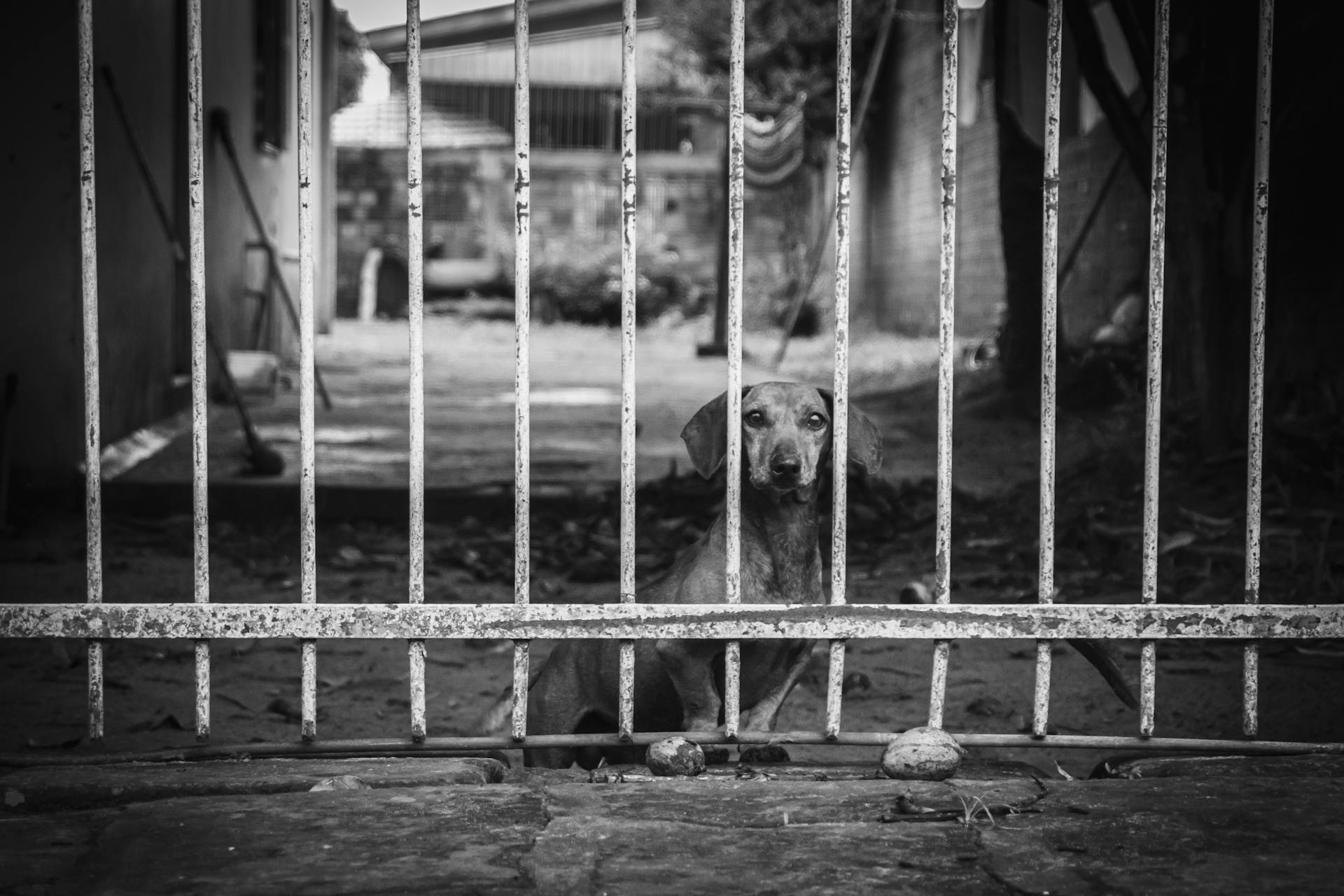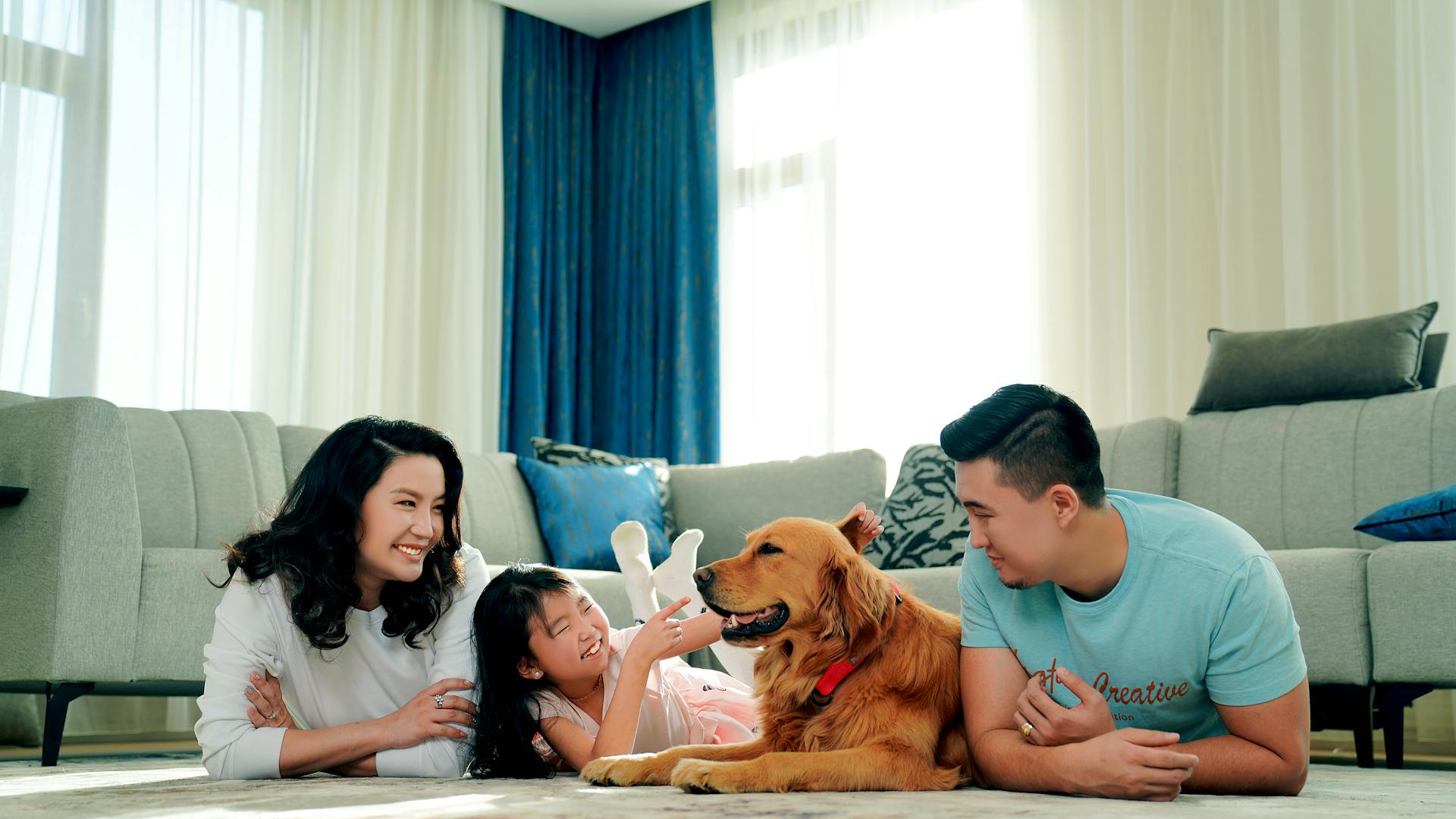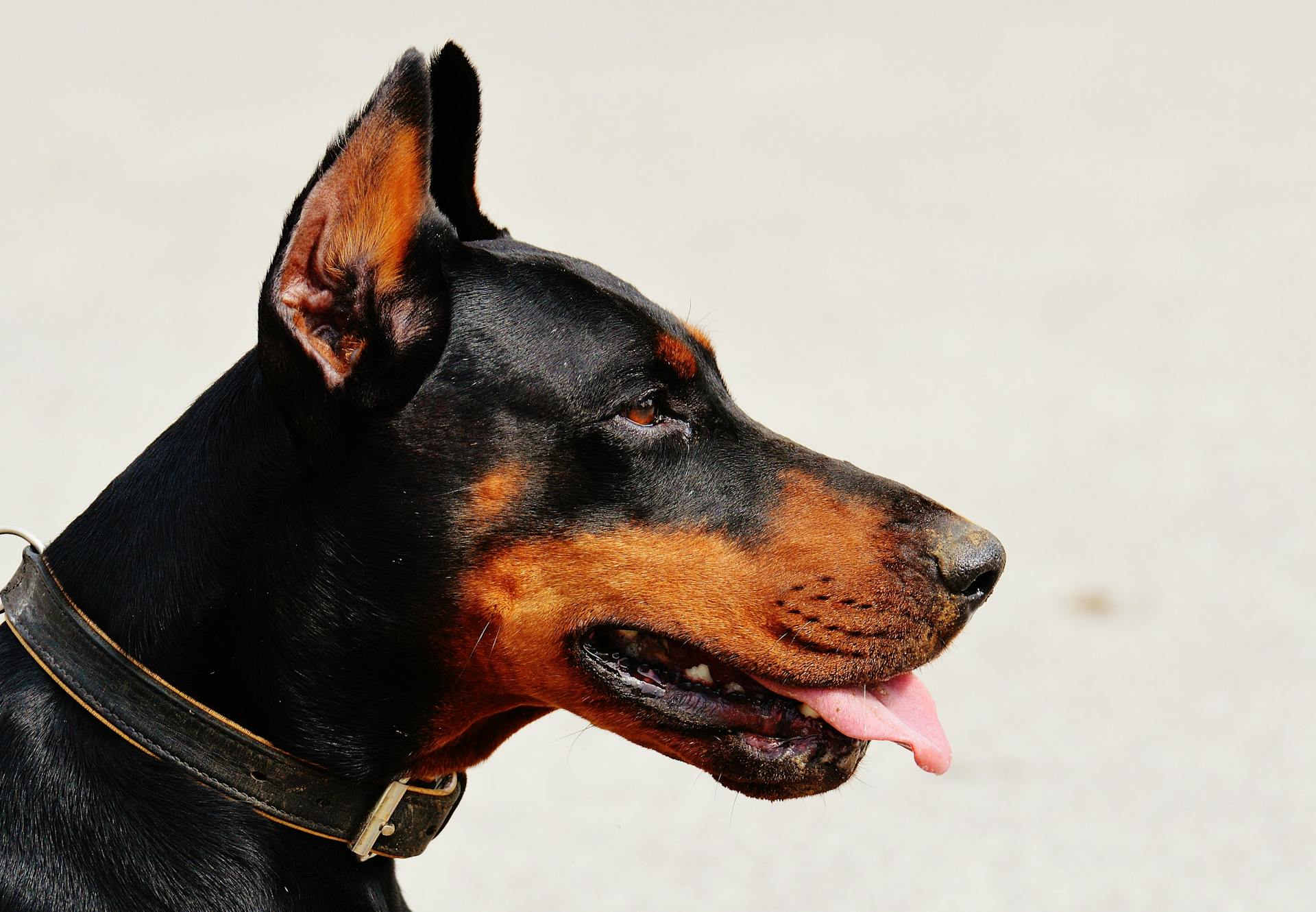
Resource guarding in dogs is a complex issue that can be triggered by various factors, including genetics, environment, and past experiences. It's essential to understand the underlying causes to address the behavior effectively.
Dogs may guard resources due to a natural instinct to protect their food, toys, or other valuable items. This behavior can be linked to their wild ancestors, who had to fight for survival.
Resource guarding can manifest in different ways, such as growling, snapping, or even biting when someone approaches their guarded item. In some cases, dogs may become overly possessive and aggressive, making it challenging for owners to intervene.
Understanding that resource guarding is often a coping mechanism can help owners approach the issue with empathy and patience. By recognizing the underlying reasons for the behavior, you can develop strategies to address it and strengthen your bond with your dog.
Understanding Resource Guarding
Dogs don't engage in resource guarding because they're trying to dominate us, but because they're trying to protect their valuables. This behavior is completely natural and can happen to any dog, regardless of breed or mix.
Some common triggers for resource guarding include poor genetics or breeding, lack of early socialization, and harsh training methods, especially when started at an early age.
We tend to see resource guarding more frequently in field-line gun dogs, such as spaniels and retrievers, but it can occur in any breed or mix of dog.
Imagine if someone tried to take your purse or wallet containing your valuables - you'd likely be upset about the invasion of your space and the taking of items that keep you safe.
A dog's behavior can escalate quickly from mild warnings to biting if their warnings are ignored or punished. Here are some common signs of resource guarding:
- Stiffening up
- Hovering over a bowl
- Eating more quickly
- Staring intently at the person or animal in question
- Growling or snapping
- Biting
Recognizing Resource Guarding Behavior
Resource guarding can be tricky to spot, but there are some key signs to look out for. A dog may growl when they feel their resource is being threatened.
Growling is a common sign of resource guarding, and it's often accompanied by other body language cues such as stiffening of the body, a hard stare, and "whale eye" (when dogs show the whites of their eyes). These behaviors can be subtle, but they're essential to recognize.
If you notice your dog becoming hyper-aware of another dog's presence, such as staring fixedly at the other dog during dinnertime, they might be worried that they're going to make a move for their meal. Other signs to watch for include lip-licking, a sudden and obvious stiffness in the body, and hyper-fixation on an object, dog, or human.
Here are some common signs of resource guarding:
- Growling
- Ears pointed backward
- Lip-licking
- A sudden and obvious stiffness in the body
- Hyper-fixation on an object, dog, or human
- Increased attentiveness to other dogs
- Low growling
- Lifting their lips
- Baring their teeth
- Stiffening their body over an item
- A hard stare
- "Whale eye" (when dogs show the whites of their eyes)
Signs of Aggression
Recognizing the signs of aggression in your dog is crucial to preventing resource guarding behavior from escalating. Growling is a clear indication of anxiety around food, toys, or other resources.
Ears pointed backward and lip-licking can also be signs that your dog is feeling anxious. A sudden and obvious stiffness in the body is another red flag to watch out for.
Hyper-fixation on an object, dog, or human can be a sign that your dog is feeling threatened. Increased attentiveness to other dogs, especially during mealtimes, can also indicate resource guarding tendencies.
Here are some specific behaviors to look out for:
- Growling
- Ears pointed backward
- Lip-licking
- A sudden and obvious stiffness in the body
- Hyper-fixation on an object, dog, or human
- Increased attentiveness to other dogs
- Stiffening the body over an item
- A hard stare
- “Whale eye” (when dogs show the whites of their eyes)
- Lifting their lips
- Low growling
- Baring their teeth
These behaviors can indicate that your dog is attempting to “guard” an item and may be prone to resource guarding.
Defensive vs Offensive
The use of the word "defensive" in the definition of resource guarding received a lot of attention from participants. Five participants discussed the merit of including the word in the primary definition or using it in a modifier.
A few participants suggested that threatening and aggressive behaviors could be offensive or defensive, and one individual suggested these terms could be applied on a case-by-case basis to help describe the dog's body posture. Resource guarding can be displayed as a purely defensive response, such as running away with valuable items.
Some participants disagreed, stating that the observed behavioral response may be a reflection of past encounters in which the dog was previously punished in a similar scenario. This can make the behavioral response more complicated than the defense of a resource.
Stopping Resource Guarding
First, it's essential to understand that resource guarding is a common issue in dogs, and it's not just about food aggression. It's about a dog's instinct to protect their resources, which can include toys, beds, and even people.
If you're dealing with a mild case of resource guarding, teaching your dog the "drop" cue can be a helpful step. This involves creating a positive association with letting go of items, and it's best to follow specific instructions to avoid reinforcing the guarding behavior.
To teach "drop", start by using a low-value item, and reward your dog away from the item. This means tossing the food or treat away from the item, rather than hovering over it. You can also practice this with high-value items, but make sure to start with low-value ones first.
Consistently providing ample resources is a good first step in preventing resource guarding. This means having enough toys, beds, treats, and food for all dogs in the household. For example, if you adopt a second dog and buy them a new bed, your first dog may want to hang out on the fluffy new bed.
A different take: Low Energy Guard Dogs
To teach "give" and "leave it" cues, pair the action with a reward, such as a treat. You can also offer a trade if you need to take something away from your dog. This helps your dog understand that humans are not a threat to their resources.
Some common signs of resource guarding include growling, stiffening the body, and a raised lip. If you notice any of these signs, it's essential to stop moving closer and give your dog space.
Here are some tips to help you stop resource guarding:
- Remove problem items to prevent triggers
- Sequester dogs in different rooms during mealtimes
- Reward good behavior and never punish dogs for "bad" behavior
- Work to build your dog's confidence by exposing them to new situations, people, and animals
- Stay vigilant in new situations and create a neutral environment
Remember, stopping resource guarding takes time and patience. It's essential to go through the process slowly and avoid rushing your dog. If you're struggling, consider seeking help from a professional trainer who can provide personalized guidance and support.
Terminology and Definitions
Most people in a survey preferred the term "resource guarding" over other options.
The majority of participants in the survey, 11 out of 14, thought that "resource guarding" and "possessive aggression" described different behaviors.
A significant number of participants, 7 out of 11, believed that "possessive aggression" described a more specific version of the behavior, often involving aggressive behaviors.
Two participants mentioned that they recognize the terms are often used interchangeably, but don't consider them to be synonyms.
There was no significant difference found between expert backgrounds and preference for terminology, with a p-value of 0.56.
Sources
- https://peachonaleash.com/resource-guarding-why-it-happens-and-how-to-stop/
- https://www.ncbi.nlm.nih.gov/pmc/articles/PMC6004413/
- https://www.humanesociety.org/resources/resource-guarding-dogs
- https://www.akc.org/expert-advice/training/resource-guarding-in-dogs/
- https://www.doggoneproblems.com/loumi-stop-resource-guarding/
Featured Images: pexels.com


